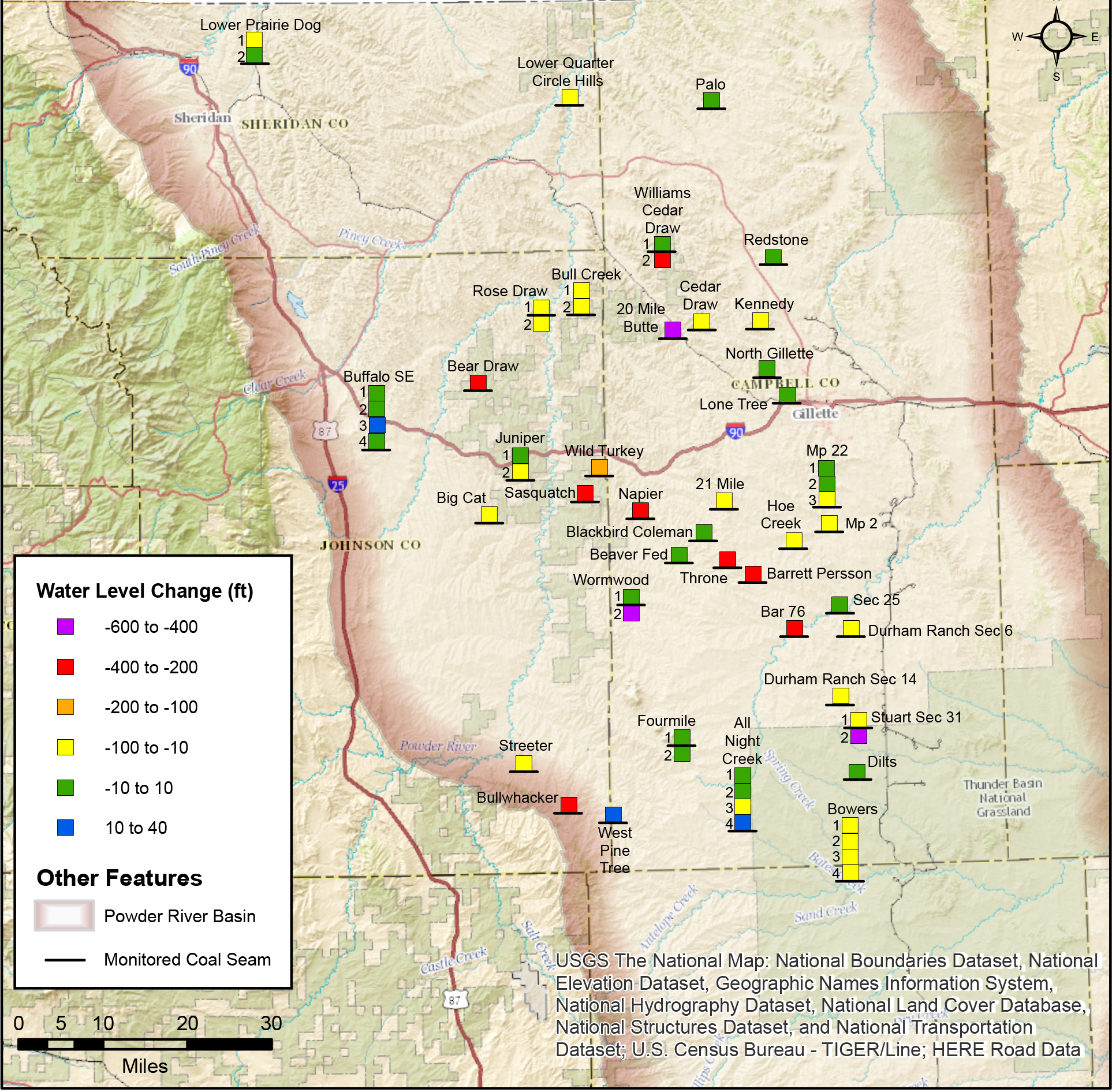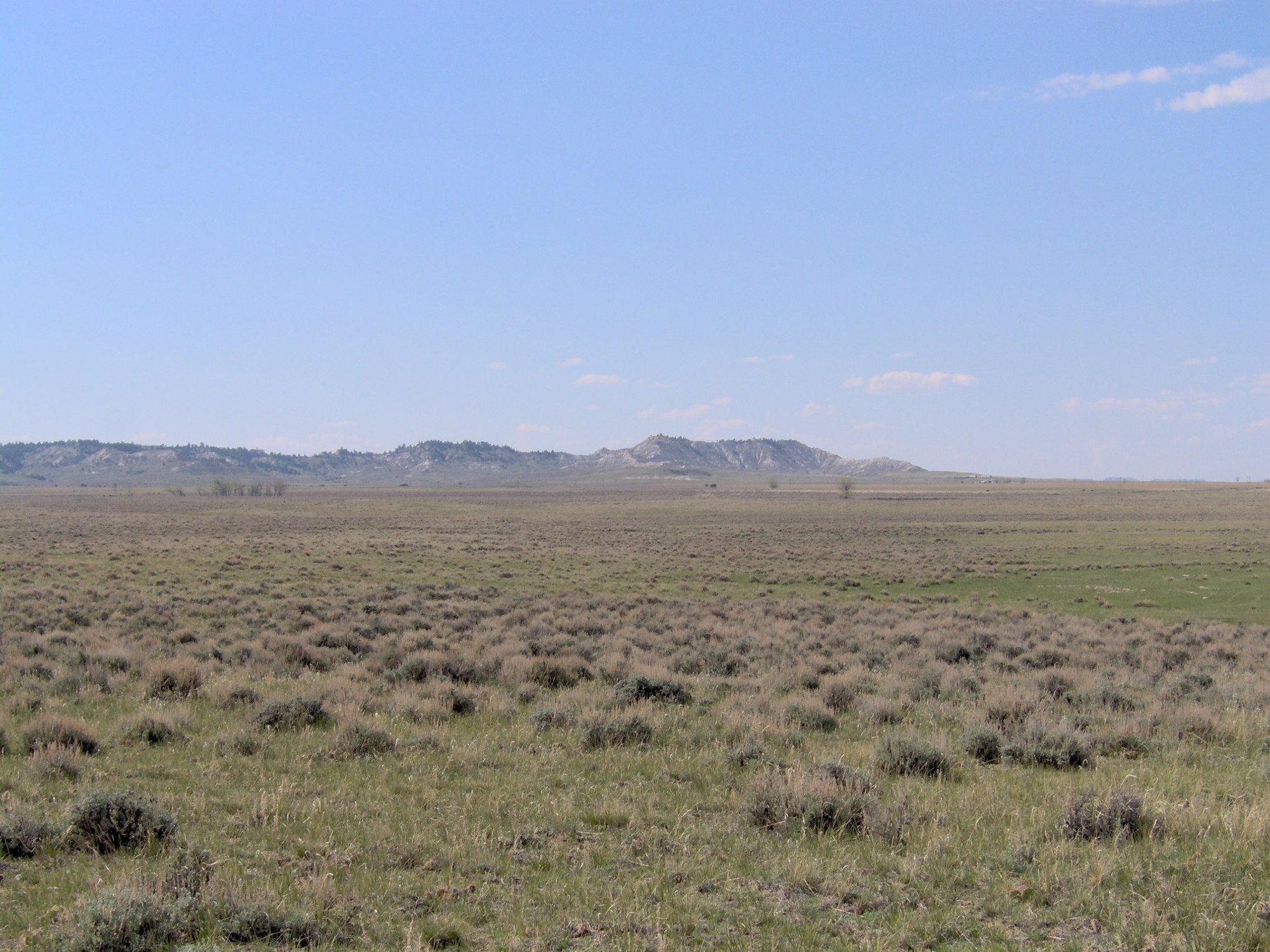NEWS RELEASE: Wyoming Geological Survey Assesses Groundwater Level Changes in the Powder River Basin
Wyoming State Geological Survey sent this bulletin at 03/07/2017 09:03 AM MST |
|
Having trouble viewing this email? View it as a Web page. |
March 7, 2017
******FOR IMMEDIATE RELEASE******
Media Contact:
Christina George
(307) 766-2286 x231
christina.george@wyo.gov
WSGS Assesses Groundwater Level Changes in Power River Basin
The Study Compared Groundwater Levels During and After CBNG Development
The Wyoming State Geological Survey (WSGS) has published results of a study examining groundwater level responses in sandstone aquifers associated with coalbed natural gas (CBNG) production in the Powder River Basin.
CBNG production has been recorded in the Wyoming portion of the basin since 1980 when the Wyoming Oil and Gas Conservation Commission first began keeping records. Annual production peaked in 2009 at more than 556 billion cubic feet before the start of a decline that has continued into the present.
CBNG is produced when groundwater is removed from a coal seam, effectively lowering the water level and reducing the water pressure. CBNG bubbles are released from the coal and transported in a wellbore to the surface where the gas is separated from the produced water. The separated CBNG (primarily methane) is pipelined to market while the coproduced groundwater is used for irrigation or livestock, reinjected into deeper geologic formations, or discharged into evaporation/infiltration pits and streambeds.
Between 2001 and 2014, the Powder River Basin in Wyoming produced nearly 5.6 trillion cubic feet of CBNG and nearly 954,000 acre-feet of groundwater. As a result, groundwater levels declined up to several hundred feet in some coal seam aquifers.
“Previous WSGS studies indicate that fluctuations in groundwater levels resulting from CBNG development extend to adjacent sandstone aquifers where many agricultural, domestic and community wells obtain their water,” says WSGS hydrologist Karl Taboga, author of the report. “The potential impact that CBNG production has had on water levels in sandstone aquifers has been a concern for some of the holders of these predevelopment water rights.”
WSGS Report of Investigations 74, “Groundwater Response in the Sandstones of the Wasatch and Fort Union Formations, Powder River Basin, Wyoming,” is intended to provide a preliminary evaluation of groundwater level fluctuations following CBNG development and its subsequent decline. The study examined groundwater level data collected by the Bureau of Land Management over the last three decades from nearly 100 coal seam and sandstone wells located on 40 monitoring sites.
The objectives of the project were to 1) assess maximum water level changes in selected sandstone monitoring wells during CBNG development in relation to geographic location, proximity to developed coal seams and depth of completion, and 2) evaluate sandstone aquifer water level responses to decreased CBNG/water production within a 1 ½-mile radius of each monitoring well.
The WSGS investigation indicated that a decline in groundwater levels of 100 feet or more occurred in deep sandstone wells (at least 600 feet) separated from a monitored coal seam by less than 200 feet. Smaller declines were observed in shallower wells more than 200 feet from a producing coal seam. Groundwater levels in sandstone wells recovered at an average rate of about one foot per year in areas where CBNG production had ceased.
The 48-page report details methods used in the study, including geospatial data, evapotranspiration rates, observation-based watershed baseflows and baseflow rates. The study can be downloaded for free.

Caption: Maximum groundwater level changes observed at 40 BLM sandstone monitoring sites. Negative numbers represent groundwater level (GWL) declines; positive numbers indicate rises in GWL. A stacked column indicates multiple sandstone wells are operating at the site (in order of depth, shallowest sandstone interval at top of column and deepest interval at bottom). Black bar in each column indicates relative stratigraphic position of monitored coal seam(s).

Caption: Rochelle Hills, eastern Powder River Basin, Wyoming. This area is considered to be an important recharge area for the Upper Wyodak coal seam. Photo courtesy of James E. Stafford, WSGS, 2006.

